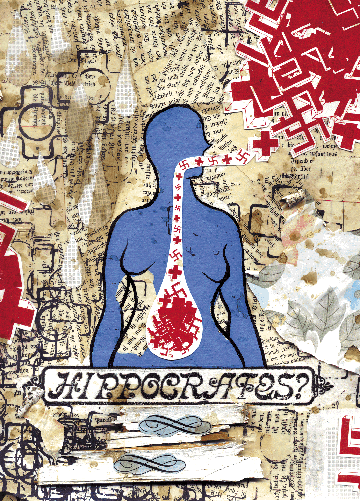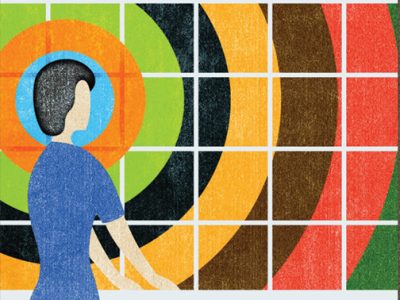
Conference | Electroconvulsive shock. Freezing. Poisoning. Beyond the horrific images linked with Nazi medical experiments, one of the most disturbing things to contemplate are the excuses Nazi doctors gave for their actions.
According to Dr. Arthur Caplan, director of Penn’s Center for Bioethics, it’s easier to believe that “only kooks and crackpots” intent on evil were behind these deeds.
But almost none of the 19 doctors and three public-health officials tried for Nazi war crimes said that what they did was wrong. “On the whole what you find in the trial transcripts that led to the Nuremberg Code are moral explanations.”
For some doctors the unique circumstances of wartime justified their actions. For others, “The idea that people were doomed to die made it ethically palatable to go through with that experiment,” said Caplan, professor and chair of medical ethics. He was one of the speakers at a conference sponsored by the Penn Humanities Forum and the Center for East Asian Studies, “Going Too Far: Rationalizing Unethical Medical Research in Japan, Germany, and the United States.”
“But probably the most powerful argument was the idea that you have to sacrifice the few sometimes to help the many,” he said. “That from a moral point of view, if you could save 10,000 lives in a month from typhus and typhoid studies if you sacrifice 30 men or 40 men in a camp … the tradeoff is worth it.”
Their rationales—and the fact that some of the Nazi research yielded data that is still used by medical science—raises a host of challenges for the field of bioethics. For one, they bring up uncomfortable reminders of issues we struggle with today, particularly in the area of informed consent. Informed consent was adopted as a requirement in response to the utilitarianist arguments presented at the Nazi trials. “You can’t trade off lives if you have to violate the rights of the individual,” Caplan explained.
But the cases aren’t always clear-cut. For example, when is it fair to use a terminally ill person in an experiment? “Can they consent, or are they coerced by their disease?”
The other problem, says Caplan, is, “If you can justify the German medical experiments on the basis of ethics, then who needs ethics?” As it struggles to answer this question, the field of bioethics needs to “fill out its portfolio, so that it’s not just the arguments; it also contains the character-building, the psychological underpinnings, the emotions that will keep you, so to speak, on the ethical course,” he said. “Most importantly, we can’t understand anything about where we’ve been unless we really do make students pay attention to those historical experiences.”
As the rest of the conference served to remind, Germany wasn’t the only theater for brutal medical experiments. Dr. Tsuneishi Kei-ichi, of Kanagawa University, explained how spies captured in Japan during World War II were given cyanide or injected with chloroform so doctors in Army Unit 731 could observe the circumstances leading to their deaths. In other cases they captured and shot citizens in the thigh to see how long bullet-extraction would take. Though “almost everyone in the Japanese medical world knew about the experiments,” they were unknown for a long time in the non-medical world, he said. “This is not just an issue of whether overt barbarism like that which existed at Unit 731 could possibly occur again, but the fact that we still lack the means to discover and prevent barbarism in a more subtle form from occurring.”
Dr. Susan Lindee, associate professor of the history and sociology of science at Penn, looked at experimental injuries inflicted during World War II by U.S. scientists in wound ballistics and aviation medicine. “In both cases such injuries had dual purposes,” she said. “The injury was expected to produce both information about healing and information about further injury.”
In just two examples, “Pilots were nauseated experimentally in order to prepare them for the experience of a bombing run and make it possible for them to continue with the bombing run—to continue to be able to injure other people. And cats were experimentally shot in order to determine ways to make more effective, more powerful, and more destructive bullets, and also to determine ways to facilitate healing from bullets.”
“War trumps everything,” Lindee noted. “It’s the ultimate card. You pull it out if it’s necessary to war to do such things as shoot cats—if it’s necessary to the state—and that’s the kind of equation that almost silences input, because it can’t be questioned.”—S.F.




